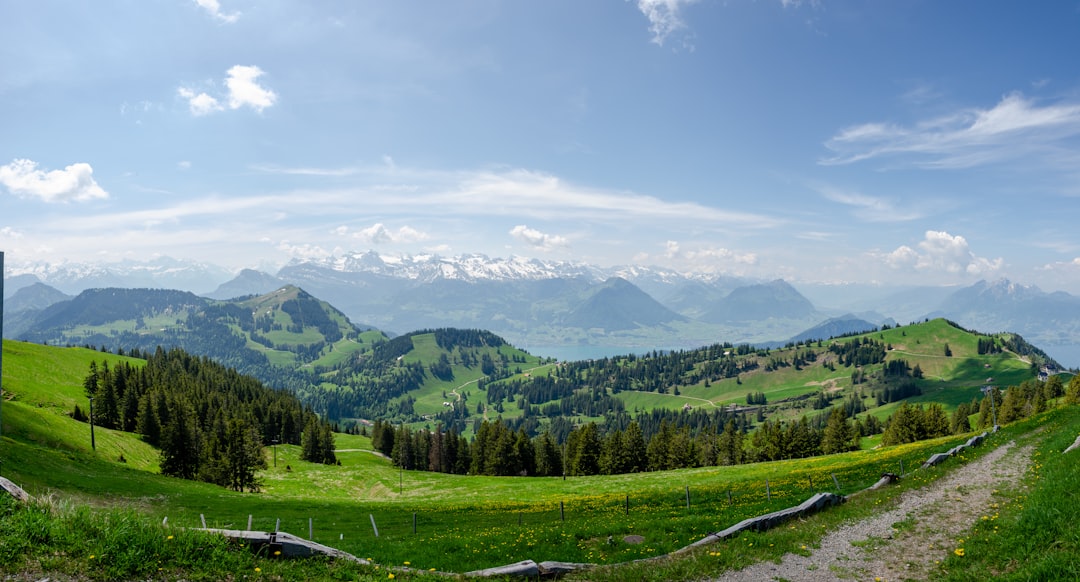The Drake Passage, a body of water that separates South America from Antarctica, is notorious for its unpredictable weather and tumultuous seas.
For adventurers and travelers alike, crossing the Drake Passage is not merely a means to an end; it is an experience that tests the mettle of even the most seasoned sailors.
The passage is a convergence point for the Atlantic and Pacific Oceans, creating a unique and often treacherous environment that demands respect and preparation. Navigating the Drake Passage requires more than just a sturdy vessel; it necessitates a deep understanding of the ocean’s moods and the ability to adapt to rapidly changing conditions. Many travelers report feeling a mix of excitement and trepidation as they embark on this journey.
The passage serves as a rite of passage for those seeking to explore the pristine wilderness of Antarctica, but it also serves as a reminder of nature’s raw power. For many, the challenge of crossing the Drake Passage becomes an integral part of their adventure, adding an element of thrill that enhances their overall experience.
Key Takeaways
- Navigating the Drake Passage is a challenging but essential part of reaching Antarctica.
- Adventure tourism in Antarctica offers unique and thrilling experiences for travelers.
- Travelers should expect rough seas and potentially severe weather when crossing the Drake Passage.
- Safety measures and precautions are crucial for a successful journey through the Drake Passage.
- The Drake Passage is home to diverse wildlife, including whales, seals, and seabirds.
The Appeal of Adventure Tourism in Antarctica
Adventure tourism in Antarctica has surged in popularity over recent years, drawing thrill-seekers from around the globe. The allure of this remote continent lies not only in its breathtaking landscapes but also in the unique experiences it offers. From towering icebergs to vast expanses of untouched wilderness, Antarctica presents an otherworldly environment that captivates the imagination.
Travelers are drawn to the idea of exploring a place where few have ventured, where the beauty of nature remains largely unspoiled by human activity. Moreover, adventure tourism in Antarctica encompasses a wide range of activities that cater to diverse interests. Whether it’s kayaking among ice floes, hiking on glaciers, or observing wildlife in their natural habitat, there is something for everyone.
The thrill of encountering penguins waddling across the ice or witnessing seals basking in the sun adds an exhilarating dimension to the journey. This combination of adventure and natural beauty makes Antarctica a prime destination for those seeking an escape from the ordinary and a chance to connect with nature in its most pristine form.
Preparing for the Journey: What to Expect in the Drake Passage

Preparation is key when embarking on a journey through the Drake Passage. Travelers must equip themselves with appropriate clothing and gear to withstand the harsh conditions they may encounter. Layering is essential, as temperatures can fluctuate dramatically, and wind chill can make it feel even colder.
Waterproof outer layers, insulated clothing, and sturdy footwear are crucial for staying warm and dry during the crossing. Additionally, travelers should consider packing seasickness remedies, as the unpredictable waters can lead to discomfort for even the most seasoned sailors. Beyond physical preparation, mental readiness is equally important.
Travelers should familiarize themselves with what to expect during the crossing, including potential rough seas and limited visibility. Understanding that conditions can change rapidly helps set realistic expectations and fosters a sense of resilience. Many tour operators provide briefings before departure, offering insights into navigating the passage and tips for coping with seasickness.
By being well-prepared, travelers can focus on enjoying the journey rather than worrying about unforeseen challenges.
Safety Measures and Precautions for Traveling through the Drake Passage
| Traveling Safety Measures | Precautions |
|---|---|
| Check weather conditions | Avoid traveling during storms |
| Wear appropriate clothing | Dress in layers and waterproof gear |
| Stay informed | Follow instructions from crew and guides |
| Secure belongings | Stow loose items and secure luggage |
| Stay hydrated | Drink plenty of water and avoid alcohol |
Safety is paramount when traversing the Drake Passage, and responsible tour operators prioritize the well-being of their passengers. Vessels are equipped with advanced navigation systems and safety equipment to ensure a secure journey. Crew members are trained to handle emergencies and are well-versed in maritime safety protocols.
Before setting sail, passengers receive comprehensive safety briefings that cover everything from life jacket usage to emergency procedures. In addition to onboard safety measures, travelers are encouraged to take personal precautions. Staying hydrated and well-nourished can help maintain energy levels during rough seas.
It is also advisable to remain aware of one’s surroundings and follow crew instructions at all times. By fostering a culture of safety and preparedness, both operators and travelers can work together to ensure a smooth passage through this challenging stretch of ocean.
Wildlife Encounters: What to See in the Drake Passage
One of the most enchanting aspects of traveling through the Drake Passage is the opportunity to encounter diverse wildlife. The waters are teeming with life, providing a unique chance to observe marine animals in their natural habitat. Travelers may spot various species of whales, including humpbacks and orcas, as they breach the surface or glide gracefully through the waves.
The sight of these majestic creatures is often a highlight for many adventurers. In addition to whales, seabirds such as albatrosses and petrels can be seen soaring above the waves, their wingspan allowing them to glide effortlessly on ocean breezes. The presence of these birds adds an element of grace to the rugged landscape.
For those fortunate enough to witness these wildlife encounters, it becomes clear that the Drake Passage is not just a route to Antarctica; it is a vibrant ecosystem brimming with life that leaves a lasting impression on all who traverse its waters.
The History and Significance of the Drake Passage

The Drake Passage holds significant historical importance as it has long been a critical route for explorers and researchers venturing into Antarctica. Named after Sir Francis Drake, who navigated these waters in the late 16th century, this passage has been a gateway for countless expeditions aimed at uncovering the mysteries of the southern continent. Its treacherous waters have challenged many adventurers throughout history, making successful crossings a testament to human resilience and determination.
In addition to its historical significance, the Drake Passage plays a vital role in global ocean currents and climate regulation. The mixing of warm and cold waters in this region influences weather patterns far beyond its immediate vicinity. Understanding this dynamic has become increasingly important as scientists study climate change and its impact on polar regions.
The passage serves as both a physical barrier and a conduit for exploration, embodying humanity’s quest for knowledge while highlighting our responsibility to protect these fragile ecosystems.
Choosing the Right Tour Operator for a Drake Passage Expedition
Selecting an appropriate tour operator is crucial for ensuring a safe and enjoyable experience while navigating the Drake Passage. Travelers should conduct thorough research to find operators with strong reputations for safety, environmental responsibility, and customer satisfaction. Reading reviews from previous travelers can provide valuable insights into what to expect during an expedition.
Additionally, prospective adventurers should consider factors such as group size, itinerary flexibility, and onboard amenities when choosing an operator. Smaller groups often allow for more personalized experiences and greater opportunities for wildlife encounters. Furthermore, operators that prioritize sustainable practices demonstrate a commitment to preserving Antarctica’s delicate environment while providing enriching experiences for their guests.
Sustainable Tourism Practices in Antarctica
As adventure tourism continues to grow in popularity in Antarctica, sustainable practices have become increasingly important in preserving this pristine environment.
This includes adhering to strict guidelines set forth by organizations such as the International Association of Antarctica Tour Operators (IAATO), which promotes responsible tourism practices.
Sustainable tourism practices encompass various aspects, from waste management to wildlife protection. Operators are encouraged to limit their impact on local ecosystems by following designated paths during land excursions and ensuring that waste is disposed of properly. Additionally, educational programs onboard vessels help raise awareness about environmental issues facing Antarctica, fostering a sense of stewardship among travelers.
The Impact of Climate Change on the Drake Passage and Antarctica
Climate change poses significant challenges for both the Drake Passage and Antarctica as a whole. Rising global temperatures have led to melting ice sheets and glaciers, resulting in rising sea levels that threaten coastal communities worldwide. The delicate balance of ecosystems within the passage is also at risk as changing temperatures affect marine life and migratory patterns.
Scientists are closely monitoring these changes to better understand their implications for both local wildlife and global climate systems. The impact of climate change on ocean currents within the Drake Passage could have far-reaching consequences beyond its immediate vicinity, influencing weather patterns across continents. As awareness grows about these issues, travelers are increasingly motivated to engage in sustainable practices that contribute positively to conservation efforts.
The Future of Adventure Tourism in Antarctica
The future of adventure tourism in Antarctica remains uncertain as environmental concerns continue to mount alongside growing interest in exploration. While many travelers are eager to experience this unique destination, it is essential that tourism develops responsibly to protect its fragile ecosystems. Striking a balance between adventure and conservation will be crucial in shaping how future generations experience this remarkable continent.
Innovations in sustainable tourism practices may pave the way for more eco-friendly adventures in Antarctica. As technology advances, operators may implement new methods for reducing their environmental impact while enhancing guest experiences. Additionally, increased collaboration between tour operators, scientists, and conservation organizations could lead to more effective strategies for preserving Antarctica’s natural beauty while allowing adventurers to explore its wonders.
Tips for Making the Most of Your Drake Passage Experience
To fully embrace the adventure of crossing the Drake Passage, travelers should approach their journey with an open mind and a spirit of curiosity. Engaging with fellow passengers can enhance the experience; sharing stories and insights fosters camaraderie among adventurers who share a common goal: exploring one of Earth’s last frontiers. Additionally, taking advantage of onboard educational programs can deepen understanding of Antarctica’s unique ecosystems and history.
Participating in guided excursions during landings allows travelers to connect with nature on a more personal level while learning about conservation efforts firsthand. By immersing themselves in every aspect of their journey—from navigating turbulent waters to witnessing breathtaking landscapes—travelers can create lasting memories that will inspire them long after they return home from their Antarctic adventure.
Drake Passage tourism has become an increasingly popular adventure for those seeking to experience the raw beauty and challenging conditions of one of the world’s most notorious sea routes. As travelers embark on this journey, they are often drawn to the unique wildlife and stunning landscapes that can be observed along the way. For those interested in learning more about the geographical and environmental aspects of such expeditions, an insightful article can be found on MyGeoQuest. This resource provides valuable information on the natural wonders encountered during a Drake Passage voyage, offering a deeper understanding of the region’s significance and allure.
WATCH NOW! Drake Passage: Earth’s Deadliest Waters Revealed
FAQs
What is the Drake Passage?
The Drake Passage is the body of water between the southern tip of South America and the northern tip of the Antarctic Peninsula. It is known for its rough seas and challenging sailing conditions.
What is Drake Passage tourism?
Drake Passage tourism refers to the growing trend of travelers visiting the region to experience its unique wildlife, stunning landscapes, and the thrill of crossing one of the most iconic and challenging bodies of water in the world.
What are the attractions of Drake Passage tourism?
Drake Passage tourism offers the opportunity to see a wide variety of wildlife, including penguins, seals, whales, and seabirds. The region also boasts breathtaking scenery, including icebergs, glaciers, and rugged coastlines.
What are the popular activities for tourists in the Drake Passage?
Popular activities for tourists in the Drake Passage include wildlife watching, photography, hiking, and kayaking. Some tours also offer educational lectures and presentations by experts in Antarctic wildlife and conservation.
When is the best time to visit the Drake Passage?
The best time to visit the Drake Passage is during the Antarctic summer, which runs from November to March. This is when wildlife is most active, and the weather is relatively milder, making it easier to navigate the waters.
How do tourists typically access the Drake Passage?
Tourists typically access the Drake Passage by joining organized tours that depart from Ushuaia, Argentina, or Punta Arenas, Chile. These tours often include a voyage on a specially equipped expedition ship.
What should tourists be aware of when visiting the Drake Passage?
Tourists should be aware that the Drake Passage is known for its rough seas and unpredictable weather. Seasickness is common, so it’s important to be prepared and follow the advice of experienced crew members. Additionally, visitors should be mindful of the fragile Antarctic ecosystem and follow guidelines for responsible tourism.
